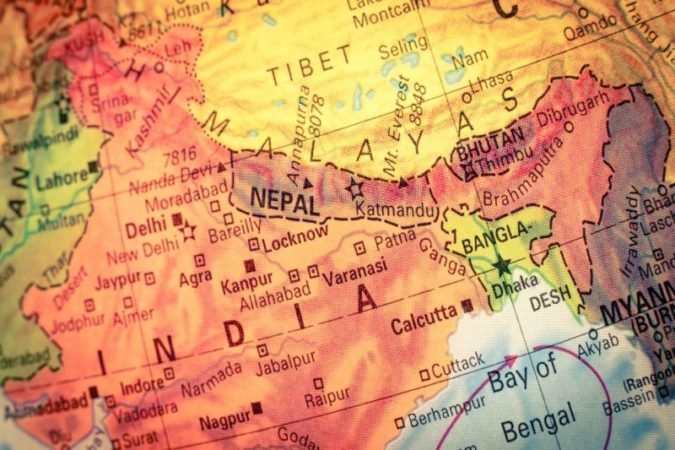Nepal’s Increasing Trade deficit with India and Bangladesh

Nepal and India have shared trade and commercial relations as neighbours in South Asia for a very long period. India is Nepal’s largest export market and the biggest source of its import. Nepal enjoys the transit facility through India’s territory under international law as access to seaports. The Treaty of Peace and Friendship in 1950 can be seen as the landmark towards the external trade of Nepal. The bilateral framework for trade is anchored on the India-Nepal Treaty of Trade and Agreement of Co-operation to Control Unauthorized Trade-2009. The revised Trade Treaty, valid for seven years, was signed on October 27, 2009. Both Treaties were automatically renewed for an additional period of 7 years in October 2016.
For Nepal, the trade deficit has been continuously increasing, especially with India. Only in the first ten months of the fiscal year 2019/2020 (Mid July 2019 to Mid May 2020) the trade deficit was about US$7,890,508.99, among which Nepal’s trade deficit with India was US$4,769,504.29 (about 60% of the total trade deficit) (Department of Customs, 2020). India covers for over two-third of Nepal’s merchandise trade, about one-third of trade in services, one-third of foreign direct investments, almost 100% of petroleum supplies, and a significant share of inward remittances on account of pensioners, professionals and workers working in India.

Why there is a trade deficit?
Because of low export performance, Nepal is facing the problem of rapidly increasing trade deficit. The trade deficit has been recognized by Nepal’s landlockedness, and also because of not finding a proper market for Nepalese manufactured goods in the Indian market. The main factors for this include, in business term, inability to compete in the Indian market on the grounds of quality, price, supply capability etc. In trade terms, it is because of quantitative restriction, product disqualification etc. It has been frequently noted that the rules, procedures and duties are revised through the government budget which has created confusions among the business communities and affected the trade.
One of the problems in the bilateral trade is also submission of unnecessary documents, administrative hassles at custom offices, additional detention charges and untimely delivery of goods have increased the cost of transaction in formal trade. Such types of activities and procedures enormously have affected the trade affairs. On the other hand, it has discouraged the businessmen in carrying out their businesses freely and fairly. Moreover, the problem between Nepal and India is because of the open border they share and importantly the unauthorized trade happening through the porous border. The transfer of goods from unofficial trade points have created a huge problem in the bilateral trade between the two countries.

How can the trade deficit be reduced?
Export is the main element of international trade that plays a vital role in maintaining the balance of payments of a state and receiving foreign currency. There is an increasing demand for electricity in India, and Nepal has a huge potentiality of electricity production and export. Importantly there is a need for immediate improvement of basic industrial infrastructures in Nepal, a conducive trade environment through policies and plan, and appropriate cash incentives are most. Increasing the supply capacity in various sectors is also important for Nepal to reduce the trade deficit. Focusing on the comparative advantages while exporting is also necessary like labour intensive items such as handicrafts, carpets, and other textiles felt products and indigenous artefacts. The value added to the agro-products is also necessary for maintaining the export. Further, the exploration of Nepal’s natural resources and mineral mines are also important for the supply capacity building and increasing export.

What about a different market opportunity?
Bangladesh is an important trade partner of Nepal due to its proximity, but the trade potential is under-exploited. Moreover, Bangladesh is a fast-growing economy in South Asia and have graduated from LDCs status, a nation of about 160 million people and a strong middle class which makes Bangladesh as a land of opportunity for Nepalese businessman and entrepreneurs in the energy, trade, tourism, culture and many other sectors. Nepali goods can find access to the Bangladeshi market if a zero tariff rate is imposed. While Bangladesh can import from Nepal green vegetables and citrus fruits variety like orange, apple, pear and peach and goods like cardamom, cement, sand and boulders for which demand is increasing annually, and Nepal can import Bangladeshi products like medicines and textiles. Nevertheless, it is business persons and entrepreneurs from Bangladesh who have been receiving paybacks through their exports of products and services to Nepal. The energy-hungry, fast-growing Bangladesh will be requiring an enormous power in a few years, and Nepal can benefit if it works to develop the hydro-power sector and export it to Bangladesh.
Nepal and Bangladesh have a great scope for cooperation in sectors such as energy, water resource management, mitigating the effects of climate change, trade, transit and connectivity for mutual benefit. Additionally, Nepal-Bangladesh relations have a long-term positive impact on each other regarding economic relations. By supporting the efforts of the business persons and private sectors with regular exchanges, and interaction through formal channels and more high-level bilateral visits will help to identify and break the blockages to further enhancing and strengthening the relationship. Strong economic diplomacy is required in creating the market opportunities within Bangladesh for Nepalese product to decrease the trade deficit.


















